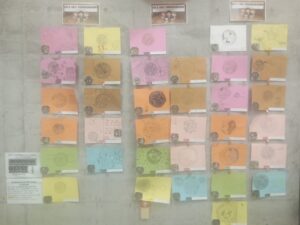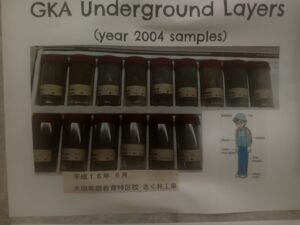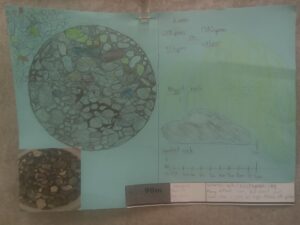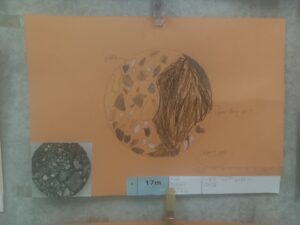初等部
Grade 6: The earth under GKA





GKAの地下には何があるのだろう?
この活動では、6年生の児童たちが2004年6月に採取された20年前の地下の粒子サンプルを分析し、GKAの地層を可視化しました。最も深いサンプルは地下96mから採取されたもので、深さ90mの火山灰の中に小石が混じっていました。この小石は、916年前(または241年前)の浅間山の噴火によって放出された可能性が高いと思われます。
この活動の目的は、(1)各層に含まれる粒子をよく見てみることにより、児童の観察力を高めること、(2)GKAの地層と岩宿の地層を比較すること、(3)粒子を大きさによって分類すること、(4)河川(5年生の学習単元)と火山についての知識を用いて、GKAの地下層がどのように形成されたかを推測することです。
Have you ever wondered what lies beneath GKA’s surface?
6th-grade students analyzed underground particle samples collected in June 2004, 20 years ago, to visualize GKA’s geological layers (地層). The deepest sample was taken from 96 meters underground; pebbles were mixed with volcanic ash at a depth of 90 meters, most likely released from Mt. Asama’s eruption 916 years ago (or 241 years ago).
The objectives of this activity are to 1) enhance students’ observation skills by examining the composition of the particles in each layer; 2) compare GKA’s geological layers with those of Iwajuku; 3) classify particles by size, and 4) hypothesize how GKA’s underground layers were formed using their knowledge of rivers (a Grade 5 topic) and volcanic eruptions. Objectives 2-4 will be completed in the upcoming science classes.

